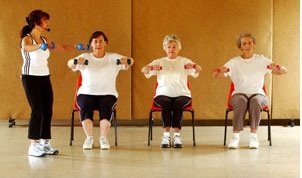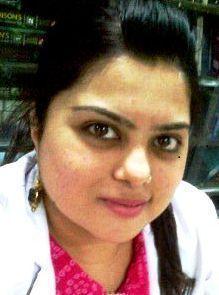Exercise Prescription for all ages
“All work and no play makes Jack a dull boy” we have been listening to this proverb ever since our childhood but how much of it do we actually practice it in our daily lives matters.
Nowadays most of the people have a sedentary lifestyle owing to their rigorous work routines and only a handful of them do take out time to exercise on a regular basis. Those people who do not exercise regularly and are following a sedentary lifestyle are prone to risks of the non-communicable diseases, such as heart disease non communicable diseases like stroke, cancer, diabetes, and chronic lung disease. They can be easily preventable if measures are taken at early age. If healthy behaviors such as being physically active, taking a healthy diet, avoiding use of alcohol and not smoking or using tobacco products etc are cultivated then the risk of developing non-communicable diseases can be significantly reduced. The earlier people adopt these behaviors, the better their chance of enjoying a healthy old age.
Generally most of the working people, work for an average of ten hours a day and most of the work done by a sedentary worker is while sitting. These days children also spend major of their time in school classrooms, at home in front of the laptop or videogames, or tuitions that are a fad these days to meet up with the stress of competition. It has been studied a person sitting for more than 4 hours a day is higher at risk for the above specified disorders. Therefore lack of physical activity is one of the leading causes of preventable death worldwide.
Identification of a healthy human being is easy. Heart and lungs of that person who exercises is healthy and this enhances good blood circulation throughout the body, therefore these people are seldom affected by circulatory or cardiac or lung disorders. These are the people with good immune system which helps them fight diseases easily.
Their skeletal muscles undergo good conditioning via exercise and as a result they have good strength. Good strength in muscles does wonders as it helps a person to prevent any physical injury due to any minor accidents or falls. Strong muscles and bones can withstand the impact of injury ant thereby prevent it. These are the people who are active throughout as they have a better endurance level. When you look at these people they have a glow on their face, a twinkle in their eyes and a spring in their feet. Now that the good effects of exercises are known wouldn’t it be a wise thing as not to fall in the category of couch potatoes or sedentary workers and rather be in the group of physically active, charming healthy individuals.
The year 2012 has been themed and devoted to ‘Ageing and health; by the World health organization. Good health adds life to years. Though ageing can’t be prevented, it is an inevitable and a predictable phenomenon, we can foster the contribution of geriatric population by helping them maintain good health. By inculcating good exercise habits in children and young adults it can be made sure that these individuals when older can lead a full and productive life and become a resource to their families and communities.
Exercise can be started as early as 5 years of age and as late as 65 years of age and above. The Global Recommendations on Physical Activity address three age groups:
- 5-17 years of age
- 18-64 years of age
- 65 years and above

Recommendation levels of physical activity in the age group of 5-17 years are 60 minutes a day and 3 days a week. The 60 minutes duration of exercise can be divided into two shorter bouts of 30 minutes. Most of the daily physical activity should be aerobic. Vigorous-intensity activities should be incorporated, including those that strengthen muscle and bone. Physical activity can include play, games, sports, transportation, chores, recreation, physical education, or planned exercise, in the context of family, school, and community activities. These recommendations are relevant to all healthy children aged 5–17 years unless specific medical conditions indicate to the contrary. Whenever possible, children and youth with disabilities should meet these recommendations. However they should work with their health care provider to understand the types and amounts of physical activity appropriate for them considering their disability. These recommendations are applicable for all children and youth irrespective of gender, race, ethnicity, or income level. For inactive children and youth, a progressive increase in activity to eventually achieve the target shown above is recommended. It is appropriate to start with smaller amounts of physical activity and gradually step up the duration, frequency and intensity over time. It should also be noted that if children are currently doing no physical activity, doing amounts below the recommended levels will bring more benefits than doing none at all. Benefits of Physical Activity for this age group are as follows:
- develop healthy musculoskeletal tissues (i.e. bones, muscles and joints
- develop a healthy cardiovascular system (i.e. heart and lungs);
- develop neuromuscular awareness (i.e. coordination and movement control);
- Maintain a healthy body weight.
- Prevents psychological problems like anxiety and depression
- Builds self confidence and participation in other co-curricular activities
- Improves academic performance
Recommended levels of Physical Activity in age group of 18-64 years are to do at least 150 minutes of moderate-intensity aerobic physical activity throughout the week or do at least 75 minutes of vigorous-intensity aerobic physical activity throughout the week or an equivalent combination of moderate- and vigorous-intensity activity. If added benefits are sought for then adults should increase their moderate-intensity aerobic physical activity to 300 minutes per week, or engage in 150 minutes of vigorous-intensity aerobic physical activity per week, or an equivalent combination of moderate- and vigorous-intensity activity. Strengthening of major musculature should be done two days a week. The 150 minutes of exercise per week target can be achieved by exercising at least 30 minutes a day for 5 days a week. The types of physical activity that an individual can engage into are walking, dancing, gardening, hiking, swimming), transportation (e.g. walking or cycling), occupational (i.e. work), household chores, play, games, sports or planned exercise, in the context of daily, family, and community activities. Extra precautions and medical advice should be taken by pregnant and post partum females and also those with cardiac disorders before striving to achieve the recommended levels of physical activity for this age group.
These recommendations are valid healthy adults in 18-64 years age group. Those with specific medical conditions can check up with their Physiotherapist. Adults with disabilities can also follow these recommendations. Also adjustments for each individual based on their exercise capacity and specific health risks or limitations may be needed.
Benefits of physical activity for adults are as follows:
- Have lower rates of all-cause mortality, coronary heart disease, high blood pressure, stroke, type 2 diabetes, metabolic syndrome, colon and breast cancer, and depression;
- Are likely to have less risk of a hip or vertebral fracture;
- Exhibit a higher level of cardio-respiratory and muscular fitness; and
- Are more likely to achieve weight maintenance, have a healthier body mass and composition.
Recommended levels of physical activity in age group of 65 years and above are similar as those for in the age group of 18-64 years i.e. 150 minutes a week of moderate-intensity aerobic physical activity throughout the week or do at least 75 minutes of vigorous-intensity aerobic physical activity throughout the week or an equivalent combination of moderate- and vigorous-intensity activity. If added benefits are sought for then adults should increase their moderate-intensity aerobic physical activity to 300 minutes per week, or engage in 150 minutes of vigorous-intensity aerobic physical activity per week, or an equivalent combination of moderate- and vigorous-intensity activity. Strengthening of major musculature should be done two days a week. The 150 minutes of exercise per week target can be achieved by exercising at least 30 minutes a day for 5 days a week. Those older adults who have poor mobility seek advice from their physiotherapist and should engage themselves in activities to improve balance, gait and learn methods to prevent falls for at least two days a week. Types of physical activity they can engage themselves into range from leisure time physical activity (for example: walking, dancing, gardening, hiking, swimming), transportation (e.g. walking or cycling), occupational (if the individual is still engaged in work), household chores, play, games, sports or planned exercise, in the context of daily, family, and community activities.
Benefits of physical activity for older adults are as follows:
- Have lower rates of all-cause mortality, coronary heart disease, high blood pressure, stroke, type 2 diabetes, colon cancer and breast cancer, a higher level of cardio-respiratory and muscular fitness, healthier body mass and composition;
- Have a biomarker profile that is more favorable for the prevention of cardiovascular disease, type 2 diabetes and the enhancement of bone health; and
- Exhibit higher levels of functional health, a lower risk of falling, and better cognitive function; have reduced risk of moderate and severe functional limitations and role limitations.
No matter what age, gender, built, income and ethnicity you are, exercise is a must for your healthy future. Do consult a Physiotherapist before starting an exercise program as they are specialized to assess you and to prepare a customized exercise prescription suitable for you needs. Get energized and let your energy wake those asleep (in regards of exercise) near you.
–
Dr.Nishat Zubair
Consultant Physiotherapist
Central India Institute of Medical Sciences
Nagpur















